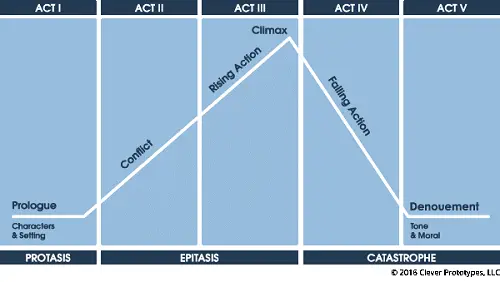
Introduction
Aristotle and Galileo are two of the most prominent figures in the history of physics and natural philosophy. While they lived in vastly different times and their ideas often appear to be at odds, a closer examination reveals surprising similarities in their theories regarding the vertical motion of objects. In this 1500-word exploration, we will delve into the unexpected commonalities between Aristotle’s and Galileo’s views on vertical motion, shedding light on how their foundational principles continue to influence our understanding of the physical world.
Similarities in Vertical Motion Theories
1. Foundation in Observations
Aristotle: Aristotle’s theories were grounded in extensive observations of the natural world. He meticulously documented the behavior of falling objects and concluded that heavier objects fell faster than lighter ones.
Galileo: Galileo, too, relied on observations and experiments. He conducted controlled experiments, rolling balls down inclined planes and analyzing the results to understand the principles of motion.
2. Acknowledgment of Air Resistance
Aristotle: While Aristotle did not explicitly recognize air resistance as a factor influencing motion, his observations of real-world phenomena inherently accounted for it. He noted that objects of different sizes and shapes experienced varying degrees of resistance during their descent.
Galileo: Galileo’s experiments and reasoning led him to recognize the role of air resistance in motion. He understood that a feather and a cannonball, when dropped in a vacuum, would fall at the same rate—a concept that foreshadowed the theory of gravitational acceleration.
3. Equivalence of Free Fall
Aristotle: Aristotle believed that the speed of an object in free fall was directly proportional to its weight. He argued that heavier objects fell faster because they possessed a greater natural inclination to reach their “proper place.”
Galileo: Galileo’s experiments with inclined planes and falling objects led him to a profound revelation: in the absence of air resistance, all objects fall at the same rate regardless of their weight. This insight challenged Aristotle’s notion of varying fall speeds.
4. Emphasis on Mathematics
Aristotle: Aristotle’s approach to physics was primarily qualitative and philosophical. While he made important contributions to many fields, he did not use mathematics as extensively to describe natural phenomena.
Galileo: Galileo’s groundbreaking work included the application of mathematics to physics. He formulated equations to describe the motion of falling objects and introduced the concept of uniform acceleration, which laid the foundation for modern physics.
5. Experimental Approach
Aristotle: Aristotle’s observations were largely qualitative and conceptual. He relied on the natural world to draw conclusions about motion but did not conduct controlled experiments with precise measurements.
Galileo: Galileo’s approach was experimental and quantitative. He conducted systematic experiments, recorded precise measurements, and formulated mathematical relationships to describe the behavior of objects in motion.
6. Concept of Inertia
Aristotle: Aristotle did not have a formal concept of inertia as understood in modern physics. He believed that constant force was necessary to maintain motion.
Galileo: Galileo’s work contributed to the development of the concept of inertia. He recognized that objects in motion tend to stay in motion unless acted upon by external forces, a fundamental principle of Newtonian physics.
7. Influence on Subsequent Thinkers
Aristotle: Aristotle’s ideas on motion, including his views on vertical motion, dominated Western thought for centuries. His influence persisted until the scientific revolution.
Galileo: Galileo’s work, particularly his contributions to the understanding of motion, marked a significant shift in scientific thinking. His ideas were pivotal in the development of modern physics and laid the groundwork for Isaac Newton’s laws of motion.
Here is a comparison table highlighting the similarities in the theories of vertical motion between Aristotle and Galileo:
| Aristotle’s Theory of Vertical Motion | Galileo’s Theory of Vertical Motion | |
| Foundation in Observations | Grounded in extensive natural world observations | Relied on controlled experiments and data |
| Acknowledgment of Air Resistance | Implicitly accounted for varying air resistance | Recognized the role of air resistance |
| Equivalence of Free Fall | Believed heavier objects fell faster | Discovered that all objects fall at the same rate in a vacuum |
| Emphasis on Mathematics | Primarily qualitative and philosophical | Applied mathematics to describe motion |
| Experimental Approach | Qualitative and conceptual | Conducted systematic experiments and measurements |
| Concept of Inertia | Did not have a formal concept of inertia | Contributed to the development of the concept of inertia |
| Influence on Subsequent Thinkers | Dominated Western thought for centuries | Marked a significant shift in scientific thinking and influenced subsequent generations of scientists |
This comparison table highlights the key similarities and differences between Aristotle’s and Galileo’s theories of vertical motion, emphasizing their approaches, insights, and enduring influence on the field of physics.
Conclusion
While Aristotle and Galileo approached the study of vertical motion from different philosophical and mathematical perspectives, their theories contain surprising similarities. Both relied on observations and experimentation, recognized the role of air resistance, and appreciated the equivalence of free fall in the absence of such resistance. Moreover, their ideas about motion influenced subsequent generations of scientists, with Galileo’s work leading to profound changes in the way we understand the physical world. By recognizing these shared principles, we can appreciate how the foundational theories of Aristotle and Galileo have contributed to our current understanding of vertical motion and physics as a whole.
Frequently Asked Questions (FAQ) About Aristotle’s and Galileo’s Theories of Vertical Motion
1. Were Aristotle and Galileo both scientists?
- Aristotle was a philosopher, naturalist, and polymath, often referred to as the “father of Western philosophy.” While he made significant contributions to various fields, including physics, his work did not align with modern scientific methods. Galileo, on the other hand, is considered one of the founders of modern science due to his pioneering work in physics and astronomy.
2. Did Aristotle and Galileo agree on their theories of vertical motion?
- No, Aristotle and Galileo held contrasting theories of vertical motion. Aristotle believed that heavier objects fell faster, while Galileo’s experiments led him to conclude that in the absence of air resistance, all objects fall at the same rate regardless of their weight.
3. How did Galileo’s experiments change our understanding of vertical motion?
- Galileo’s experiments challenged Aristotle’s theories and introduced the concept of uniform acceleration. He showed that, in the absence of air resistance, objects fall with a constant acceleration, a principle that laid the foundation for modern physics.
4. Did Aristotle and Galileo consider air resistance in their theories?
- Aristotle did not explicitly recognize air resistance, but his observations inherently accounted for varying degrees of resistance in different objects. Galileo, through his experiments, recognized and addressed the role of air resistance in vertical motion.
5. What is the concept of inertia, and how did Galileo contribute to it?
- Inertia is the tendency of an object to remain at rest or in uniform motion unless acted upon by an external force. Galileo’s experiments with inclined planes and falling objects contributed to the development of this concept. He demonstrated that objects in motion tend to stay in motion, a fundamental principle of Newtonian physics.
6. How did Aristotle’s and Galileo’s theories influence subsequent thinkers?
- Aristotle’s ideas on motion dominated Western thought for centuries and had a significant influence on medieval and early modern science. Galileo’s work marked a turning point in scientific thinking and laid the groundwork for the scientific method. His contributions influenced subsequent generations of scientists, including Isaac Newton.
7. Did Galileo’s theories completely negate Aristotle’s ideas on motion?
- While Galileo’s experiments challenged Aristotle’s theories, it’s important to note that both philosophers made valuable contributions to their respective eras. Galileo’s work revolutionized the field of physics, but Aristotle’s writings contributed to a broader understanding of the natural world.
8. Are Aristotle’s and Galileo’s theories still relevant today?
- While some of Aristotle’s ideas have been replaced by modern scientific theories, his work remains historically significant. Galileo’s contributions, particularly his emphasis on experimentation and quantitative analysis, continue to be foundational in the study of physics and the scientific method.
9. How did Galileo’s work contribute to modern physics?
- Galileo’s work laid the foundation for the scientific method, emphasized empirical observation, and introduced the concept of uniform acceleration. His principles played a crucial role in the development of classical physics and the eventual formulation of Newtonian mechanics.
10. What are some modern applications of Galileo’s principles of motion?
- Galileo’s principles of motion are still relevant in various fields, including engineering, physics, and space exploration. They are used in designing transportation systems, analyzing the trajectories of projectiles, and understanding the motion of celestial bodies.
These FAQs provide insights into the historical significance and enduring influence of Aristotle’s and Galileo’s theories of vertical motion, highlighting the evolution of scientific thought over time.












Leave a Reply